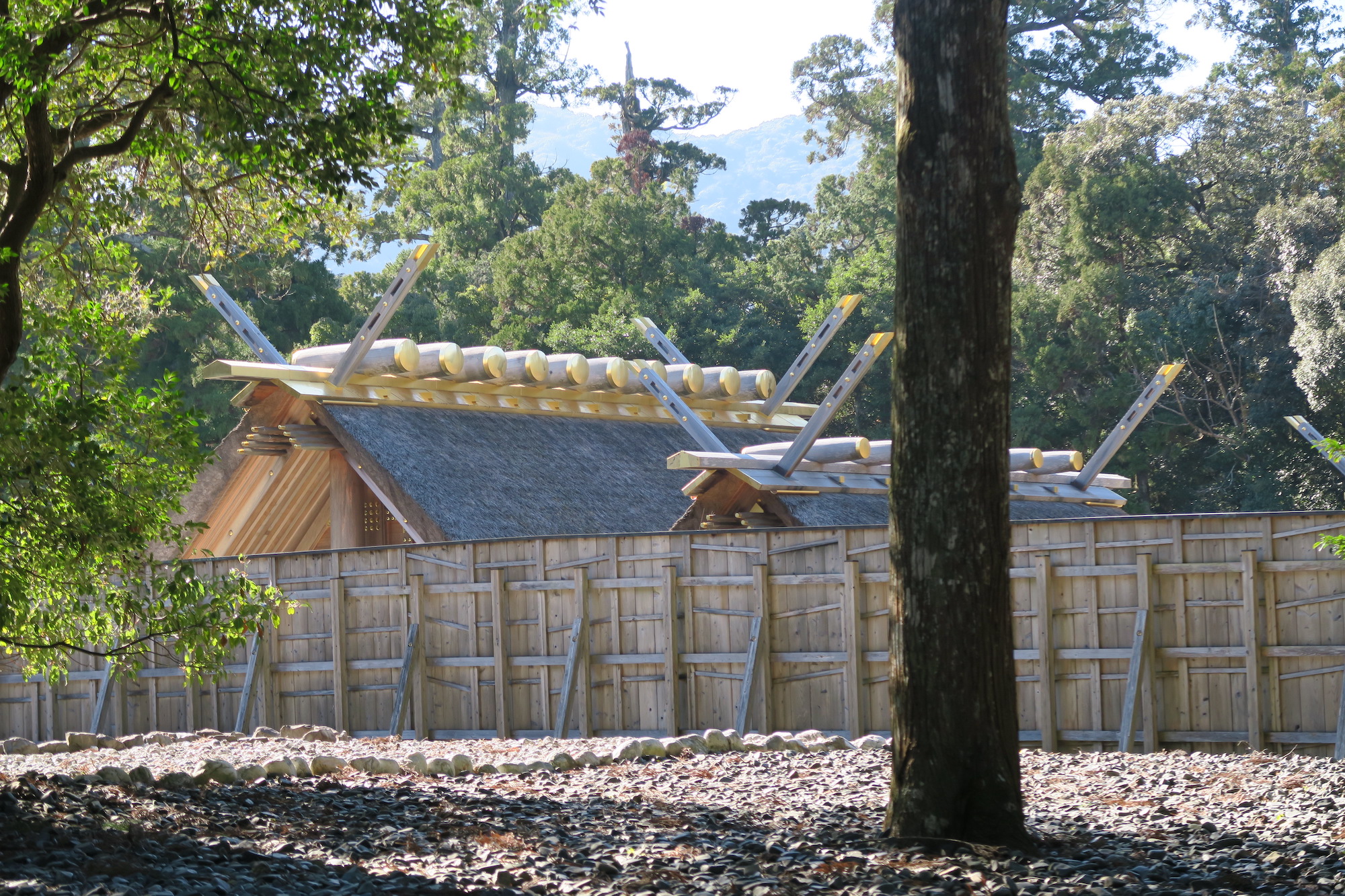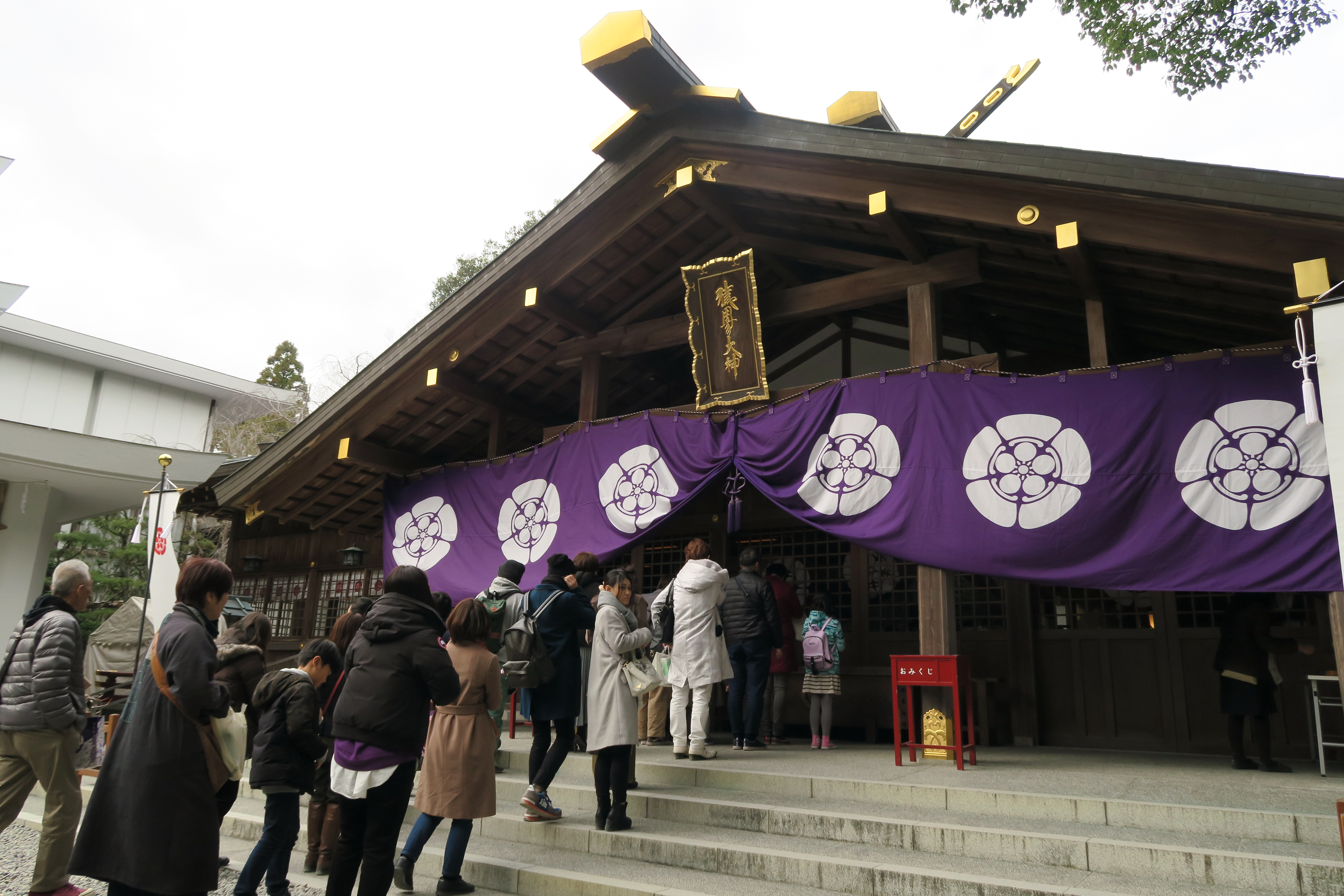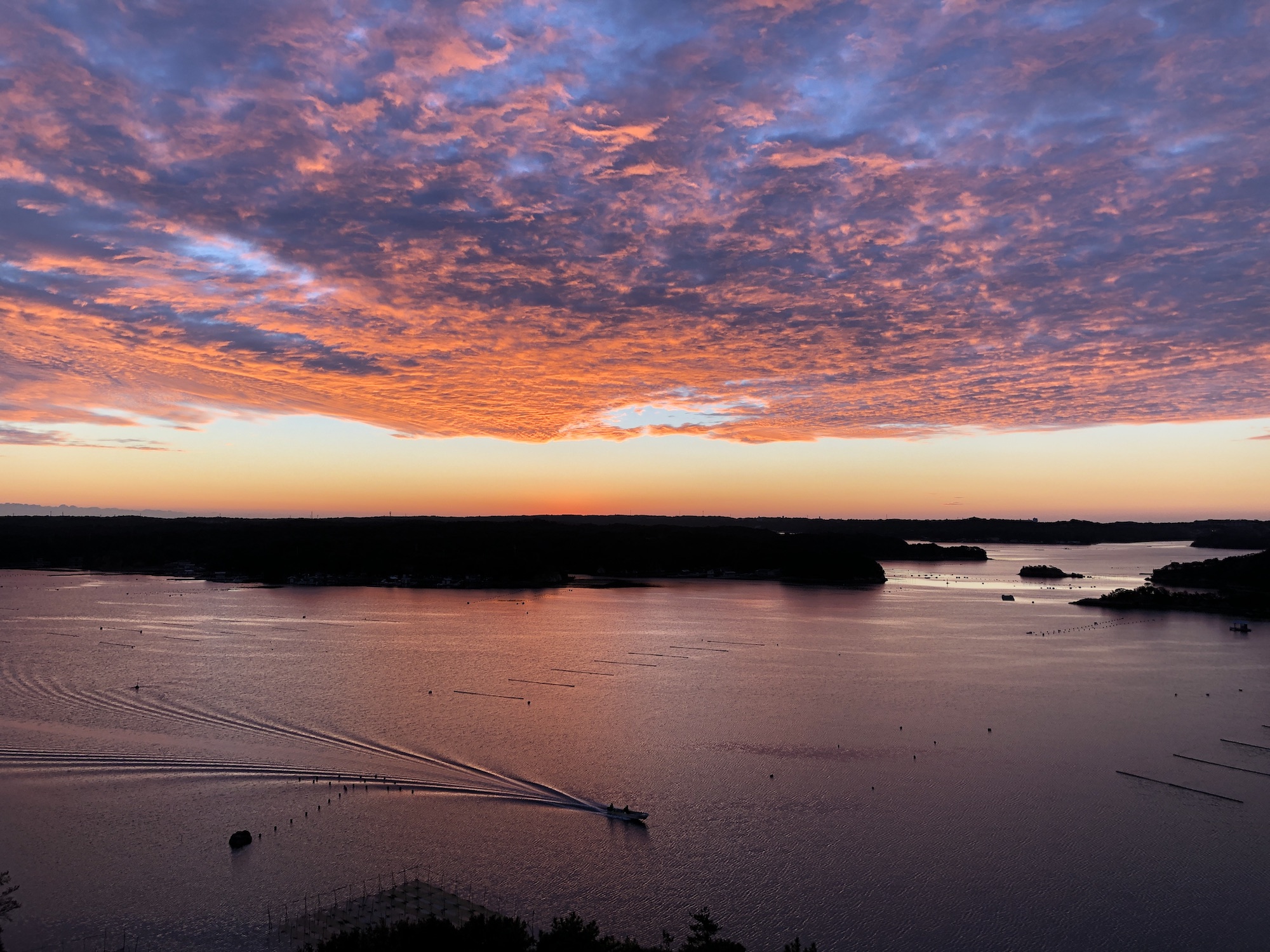In a time before time, the sibling deities Izanagi and Izanami (who were married, but that is a different tale) stood on the Floating Bridge of Heaven. They had a jewelled spear which they dipped into the ocean below. After pulling it out, the drops from the spear formed the islands we know today as Japan.
Later, Izanagi was washing his face. When he washed out his left eye he “begat” Amaterasu — the goddess of the sun. Amaterasu’s brother, the god of the wind named Susano-o was begat when Izanagi was washing his nose.
Susano-o was a bit of a bully, and did some really mean things to his older sister. Once, when Amaterasu couldn’t handle things anymore, she hid herself in a cave. This was problematic as she was the sun goddess, so the other gods got together in the dark with a plan and tricked her into coming out using a mirror. There is obviously lots more to the story, but the mirror is important: it becomes one of the three Imperial Regalia of Japan.

Much later, about 2000 years ago in our history, the daughter of the emperor of Japan at the time set out to find a permanent location for the worship of the Sun Goddess. She settled on Ise, in Mie prefecture, a beautiful area with spectacular sunrises. Two millennia later Ise Grand Shrine (Ise Jingū) is the most important of Japanese Shinto holy sites, considered the “home” of Amaterasu, and houses the mirror from the myth. It is a primary pilgrimage destination for people all over Japan. Ise Jingū is actually two complexes consisting of 125 shrines to various deities.
We travelled to Ise on the Shimakaze, a very fancy sightseeing train. The weather was fairly chilly, but we warmed ourselves multiple times a day in the hot springs of our hotel, the Kashikojima Hojoen. We ate very well (lots of Japanese spiny lobster — or “Ise Shrimp”) and I took a ton of photos of sunrises.
Although we hit many, many of the sub-shrines (and even some surrounding shrines), the main attraction was the Inner Shrine. After crossing a massive wooden arched bridge into the holy area, visitors will walk through a wide winding path through the grounds, past various visitor buildings, museums and subshrines. The area is forested with massive trees, and on this day, the sky was blue and the air was fresh. At your common Shintō shrine you will wash/purify your hands at a temizuya, a water trough equipped with long-handled bamboo ladles. But at Ise, pilgrims will walk down broad steps onto a wide concrete plaza beside the Isuzu river, where they can kneel and purify their hands in the cool waters of this famous river, of which many poems and songs have been written. Up from the riverbank, we walk through a series of torii, past trees, temple buildings and side roads to sub temples towards the main shrine.

To get to the main shrine, you have to climb a grand stone staircase, pass under a torii into a small courtyard. The standard offertory box stands in front of a second gate that opens on to a raked gravel inner courtyard. There is a second wall, over which you can glimpse the gold trimmings of the actual shrine buildings. It is here that you toss your coin into the box, bow, clap your hands to get the attention of Amaterasu, and pray.

For a shrine established 4 years before the birth of Jesus, everything looks really new. The wood used in the structures is fresh and white, and the sun glints off brightly polished gold-copper adornments on the shrine buildings. For someone used to visiting the dark wood temples of Kyoto, the “freshness” of this shrine really stands out.
Back around 2003, my wife (then girlfriend) and I visited Ise Jingū for summer vacation. However, at that time, we walked up a different grad staircase, just to the right, and paid our respects to a different inner shrine, built on a currently open courtyard to the right of where the shrine now stands. Every twenty years, the shrine is rebuilt in a ritual called Shikinen Sengū (式年遷宮). Newly cut cypress logs are dragged through the city to the empty shrine site, where a perfect replica is constructed using traditional techniques. This tradition symbolizes the concept of constant renewal, or tokowaka (常若). In Shinto there is the idea that new objects have more divine power. The shrine is next scheduled to be rebuilt in 2033. Maybe the next time I go, it will be in the same place as when I visited 17 years ago.
A prime surprise
We were hustled out of the prayer area by shrine security. They were out in force today, since the Prime Minister of Japan Abe Shinzō was coming to pay his respects — this is one of the most important shrines in the country. We hadn’t scheduled our holiday to Ise in order to meet the prime minister, it just turned out that way. The hotel staff warned us that traffic might be bad with all the police.
We left the inner shrine, walked around the open space where the previous incarnation stood, and walked down the backside of the hill, circling around back to the main path that leads up to the shrine. There police stood holding ropes and people lined the path waiting for the prime minister to walk by. We aren’t particularly fans of this prime minister, but we couldn’t really go anywhere, so stood back and watched the procession. He passed by as people snapped photos with their mobile phones.
Once he was by, we tried to head towards the exit of the shrine, but were blocked again by the police. We had to wait until he had prayed and came back the same way. Thus we stood around for a time, until a very tall police officer came through and told everyone standing by the ropes to “Get ready! The prime minister wants to high-five everyone!” Thus, we stood and dutifully gave our high fives.
Phew! Once that was done, the police put down the ropes and we could leave… but we chose the wrong direction and got caught behind another high-security rope barricade. The prime minister was viewing a horse (?) and was coming by here so please wait 10 minutes he said… So one last time he shook hands and seemed particularly intrigued by my daughter.
Road opening
After finally exiting Ise Jingū, we stopped a cute café for a curry and some tea. We needed to warm up after standing in the cold wind for so long waiting for the prime minister to pass three times!
Next, we decided to visit Sarutahiko Jinja. There are over 2000 shrines to Sarutahiko, but this Jinja is one of the special ones. Sarutahiko is very tall and strong deity of guidance. When you pray to Sarutahiko he will show you the way, and open new paths for you to go down — an appropriate place to visit at the beginning of the year.

As it was a special occasion, we actually requested a kitō (祈祷). Rather than merely lining up to the front of the shrine, tossing a coin in the box and ringing the bell, we went to the shrine administration building and applied for a “road opening ritual.” A shrine maiden escorted us into a waiting room, where we sat and straightened our clothes. Ten or fifteen minutes passed, and she came to fetch us. Normally when you pay respects at a shrine, you stand on the outside of the building. When you request a special ritual (and pay a few thousand yen), you sit inside the shrine and a Shinto priest does the prayer for you. We have done a few of these before, for special occasions when our kids hit a certain age.
Sitting inside of the shrine on low chairs, hearing the priest intone prayers in that special Japanese way, one can be very self-conscious: everyone else lined up to pray is looking in on you! And I can just imagine the exclamations of “Gaijin da!” when they see me… The whole ritual took about 15 minutes. We stood when told, and sat when told, and at the end my wife and I each drank a small saucer of sake, in celebration of a propitious new year.



